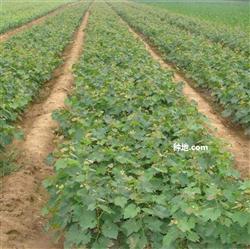Planting method of Prunus mume
Western plum is rich in nutrients, excluding fat and cholesterol, which is a kind of fruit suitable for men and women, young and old. nowadays, western plums on the market are basically processed products, such as dried prunes, dried plums, canned plums and so on. In fact, it can also be made into salads and cakes, which is a favorite of many people, so how is it grown? Today let's learn how to grow it.

1. Variety selection
There are many varieties of western plum. We generally choose varieties with large and full fruit, good color and taste, high yield and small stone according to the local soil conditions and climatic conditions. At the same time, we also need to consider the market situation of western plum, which varieties sell better. At present, the best varieties of western plum on the market are French plum, Hong Ximei, blue honey and Steinlei, which can be used as a reference.
2. Choose a place to build a garden
Prunus mume is a new type of fruit planting introduced from Europe in China. Its requirements for planting are not very high. It can be planted in many places in our country. Its planting site is similar to the traditional plum planting land in China. After the selection of planting land, it is generally to carry out hole reclamation, but if there are conditions, it can be completely reclaimed, so it can be threatened by water germs and insect pests. After finishing the drop, sprinkle sufficient fertilizer therapy in each hole as the base fertilizer, and then plant according to the spacing of three meters between rows and two meters between plants, and build a garden in the surrounding fence at the same time.
3. Fertilizer and water management
Prunus mume generally needs to be fertilized three times a year in addition to the base fertilizer after planting. The first time is usually fertilized at the flowering stage to promote the flowering stage, mainly using urea and adding a small amount of potash fertilizer. The second time is when the fruit is growing. It is mainly potash fertilizer to promote fruit expansion, and it is necessary to spray an appropriate amount of foliar fertilizer and apply a small amount of urea to prevent branches from aging. The third time is to apply fertilizer after harvest. It is mainly based on compost, which plays a good role in the conservation of Prunus mume trees and prepares for the yield in the coming year.
4. Pruning and shaping
Prunus mume needs to be pruned at least once a year. When Prunus mume still has trees, we mainly prune some very messy branches at the bottom of Prunus mume, and at the same time trim some old paper to keep the main branches of Prunus mume, so that it can live and hide quickly. When it grows to a certain height, it is pruning so that it can grow new side branches and maintain a good crown and tree shape. For adult Prunus mume, we mainly want to prune the weak, withered, diseased and dense branches of Prunus mume to ensure the yield of Prunus mume.
5. Artificial pollination
Prunus mume can be pollinated naturally, but the phenomenon of physiological fruit drop is more serious and pollination is unstable. In order to increase the yield of Prunus mume, we usually use artificial pollination to collect buds during flowering. Collect pollen, and then choose to pollinate in the morning on a sunny day, so the success rate of pollination will be higher. It is generally possible to use point pollination, smearing and spraying, or even beating pollination with cotton-coated pollen.
6. Thinning flowers and fruits
During the flowering period, we should thinning flowers reasonably and gently knock down some very dense plum blossoms, diseased flowers and weak flowers, so as to ensure a reasonable fruit setting rate, followed by a fruit thinning after fruit-setting disease. remove some weak, diseased, deformed and dense fruits, which can reduce the probability of falling fruit and improve the yield and quality of western plum.
7. Pest control
Xiumi's resistance is very strong, so there are few diseases, as long as the amount of fungicides used for sterilization is sprayed three times a year at a reasonable time, such as carbendazim, chlorothalonil and so on. The most common pests are leaf moths, beetles, caterpillars and mites, we can use the method of trapping and killing, at the same time, we can also use targeted agents to spray, such as dimethoate milk, trichlorfon and so on.
- Prev

Conditions for Carambola Cultivation
Conditions for Carambola Cultivation
- Next

How to manage grape seedlings in summer and autumn?
How to manage grape seedlings in summer and autumn? Is there anything to pay attention to? there are fruit growers who can not cultivate strong grape seedlings or virus-free grape seedlings year after year, or lack of experience, or relax management. The key to the quality of grape seedlings lies in the management of summer and autumn. First, branch management. 1. Wiping branches. Cuttings.
Related
- Moge, come on! The staff of the peasant association in the producing area of cantaloupe were frightened when the crowd gathered.
- Causes and Solutions of low Fruit setting rate of Apple
- Symptoms and control measures of passion fruit virus disease
- Fruit growing lesson: how do apple orchards keep high yields?
- Can you build orchards in the mountains? What are the pros and cons?
- How to manage the coloring period of Crisson grape?
- This paper introduces the processing technology of two kinds of fig products.
- How much is a month for retired teachers in rural areas by 2020?
- How can strawberry planting increase sugar content? We should pay attention to management in many aspects.
- What are the cultivation techniques on how to improve the yield of golden fruit?

